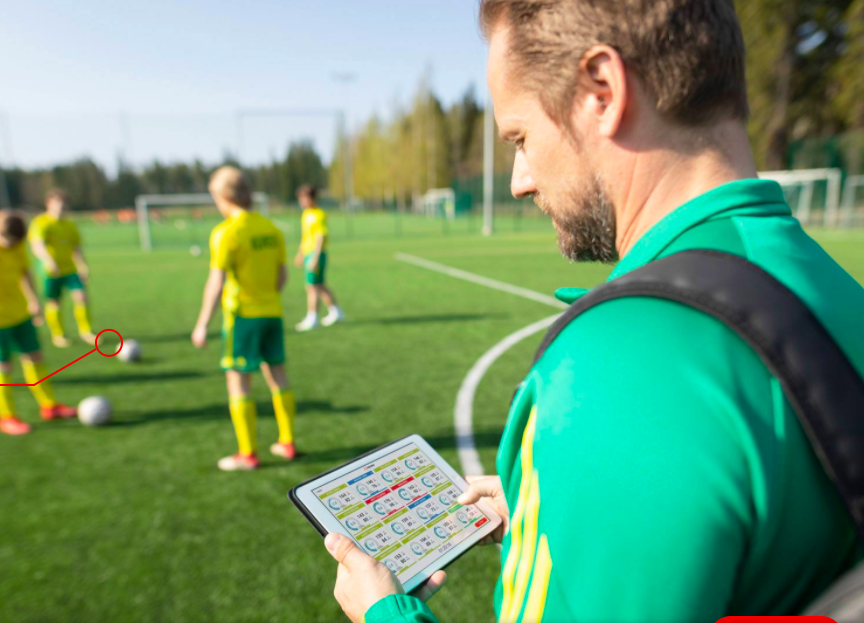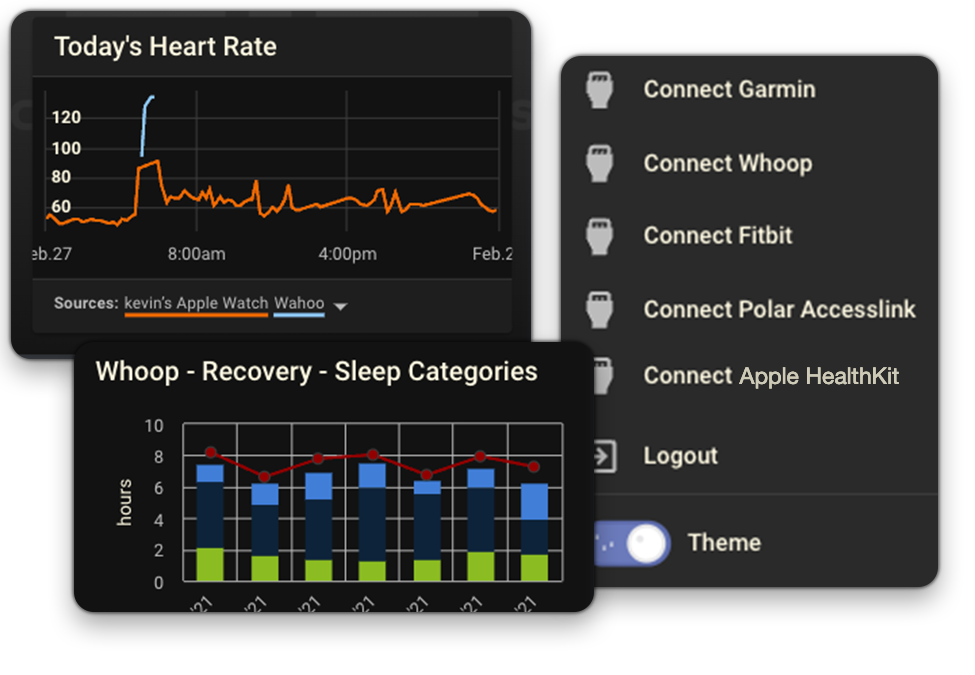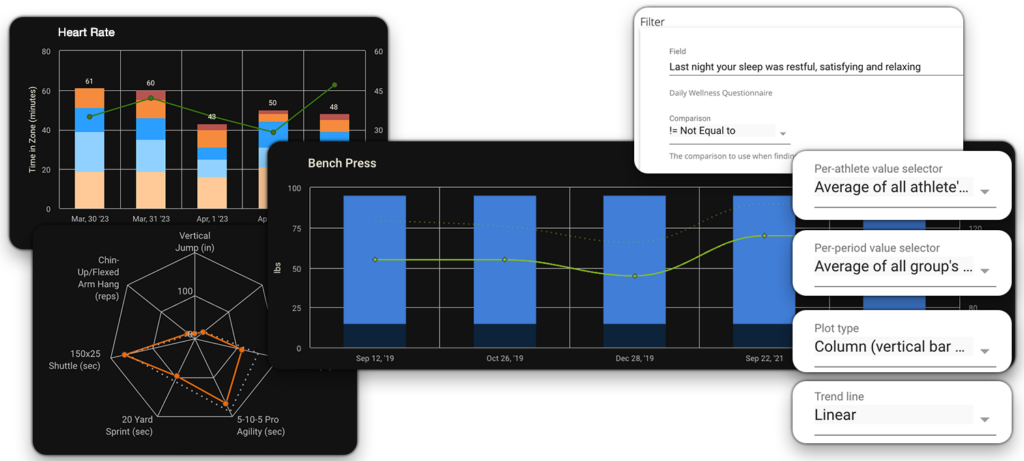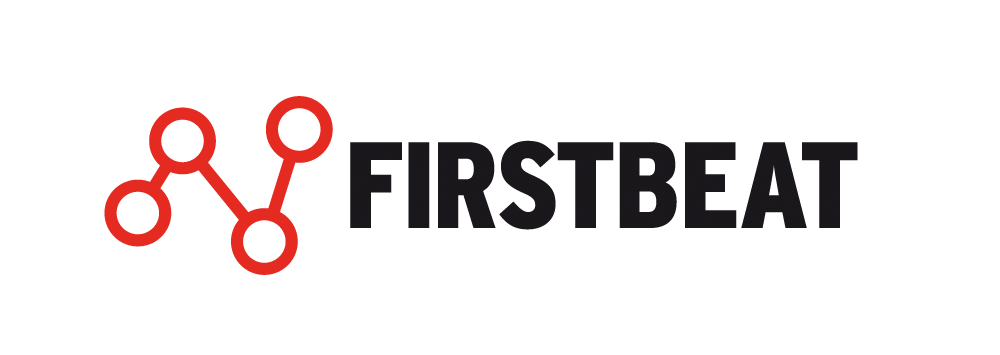VELI-PEKKA KURUNMÄKI
DIRECTOR OF SPORTS PERFORMANCE PRODUCTS, EXERCISE PHYSIOLOGIST
One of the most utilized tools in the sports performance industry is heart rate monitoring. The company FirstBeat, founded in 2002, is one of the leaders not only in heart rate monitoring technology but also the study of Heart Rate Variability and athlete recovery.
CoachMePlus’s Matthew Coller checked in with the Finland-based company to find out how heart rate monitoring is being implemented into the strategies by coaches sports organizations. Veli-Pekka Kurunmäki is in charge of sports performance products at FirstBeat. He has studied exercise physiology at the University of Jyväskylä and has personal experience in both coaching and competitive sports
Interview with Veli-Pekka Kurunmäki
WHAT IS FIRSTBEAT?
Sure. Heart monitoring has a lot more to offer than just beats per minute and target zones. For example, a lot of people don’t realize that the time between consecutive heartbeats is constantly changing, and coded into those changes are respiration and lots of other information about how the body is performing and recovering.
At Firstbeat, we develop and apply the smart analytics necessary to give coaches, trainers and athletes access to all the information the heart has to offer.
When it comes to physiological monitoring, and heart rate monitoring in particular, massive amounts of data can be collected in a short amount of time. And that data is often messy and challenging to interpret. That’s why analytics are so important. It is about offering concise actionable information for better training decisions.
We also recognize that performance monitoring has multiple dimensions and the best way to account for performance through examining the combination of internal and external loading. In other words, it is about tracking how much work an athlete is performing and how their body is reacting to that workload.
Advances in GPS and accelerometer technology have really opened the possibility of external load monitoring, and a lot of teams are using those methods with great results. Our work at Firstbeat focuses on offering the other side of that equation; what is happening inside the body.

WHAT KIND OF DATA IS FIRSTBEAT ANALYZING WITH YOUR TECHNOLOGY?
There are several ways to look at heartbeat data. One way is to focus on the moments of highest intensity during training, another is using heart rate to see how hard you are working at the moment.
When we are tracking athlete training loads over time, we often begin with training impulse (TRIMP) and Training Effect. Training Effect is certainly one of our most popular metrics. It accounts for the impact each session has on individual fitness levels.
Differences in individual physiology and changes in personal conditioning mean that similar training activities can impact players differently. When coaches and trainers can see the impact of training accumulate in real time, their ability to manage towards goals increases. It also means being able to accurately assess and adapt training plans based on individual challenges and specific player needs.
HOW DO YOUR CLIENTS USE FIRSTBEAT TO THEIR ADVANTAGE?
One of the biggest challenges in training plan development involves working out how training activities can best serve the actual demands of the game. So naturally, most of our customers begin by analyzing game requirements. Heart rate data measured during games and scrimmages is used to get a picture of in-game loading for each player and position. That information is used to inform training decisions.
In hockey, for example, the number of battle drills can be adjusted to accurately produce moderate or hard training episodes. The ability to quantify internal training loads also allows trainers to analyze specific drills to reveal contributions to the total intensity of the training session.
Quite a few teams are using Firstbeat to match load quantification data with weekly training targets. They’ll use games as the basic building block, so depending on how many games you have in a week and build the rest of the training around that.
HOW DO YOU HANDLE AN ATHLETE WHO IS RETURNING FROM AN INJURY OR JUST FROM SITTING OUT FOR A WHILE?
This has been an especially hot topic for our soccer clients in Europe and South America.
In typical return-to-play scenario, the first two weeks are a critical time. That’s when training loads are being gradually returned to normal. Our ability to clearly identify training loads and show recovery allows more granular control over the process of managing training dose-response relationships of returning players.
Although, perhaps more importantly, there are clear signs that improved control over work loads and recovery helps prevent injuries before they occur. When players are fatigued they are slower to react, have less control over their bodies, and are less able to protect themselves on the field.
SHOULD HOCKEY COACHES REQUIRE MORNING SKATES?
Absolutely, coaches and players both. And optional skates are a great example of how objective monitoring data can inform a participation decision.
This is an area where Firstbeat’s 24-hr monitoring option can be useful. We have a sensor that can be worn around the clock to capture a complete picture of player recovery. That data is evaluated to document individual recovery processes, and what works best for each player. We look at things like how long does it take after going to bed does the deep recovery process begin. CoachMePlus lets you view all this data in one place.

Teams in the KHL contest a 60 game season and playoffs across seven different time zones. For some athletes, the recovery process doesn’t really kick in until 7am the next morning after a game. In those cases, it is often much more effective to skip the morning skate, and use that time to allow body’s resources to accumulate for a less fatigued afternoon session.
HAVE COACHES BEEN ACCEPTING OF THESE NEW SPORTS SCIENCE TECHNOLOGIES?
“For sure, the higher the level of competition the stronger the motivation to find as many advantages as possible. That said, coaches still vary in terms of attitudes towards technology and the degree to which they want to be directly involved with data and how it is interpreted.”
When large amounts of data can be reduced into a few key performance indicators, strength and conditioning coaches can communicate critical points to the head coach quickly and efficiently. They can highlight what aspects of the daily schedule are working well, or indicate which players are struggling to recover from assignments.
In one case, an NHL coach liked to skate the team really hard right before games to strengthen team discipline and build tough attitudes. The S&C coach utilized our system to show that these hard pre-game sessions left the team at a disadvantage in the first period and suggested a lighter approach before the game.
They decided to use our training load parameters to modify their preparation, and it worked. The team won 10 games in a row. Of course, a ton of credit for winning those games goes to the players and coaches. And there is always some luck involved, but it was a good example of how data and analytics can be used to make minor changes with major results – especially in highly competitive situations.
HOW IMPORTANT IS VISUALIZATION OF DATA WITH PLAYERS AND COACHES?
Visualization is powerful tool for understanding. There are, of course, coaches and players who would rather just see the numbers.

“But in general, if you can show training and progress visually, reports become easier to understand and more impactful. So that tends to be the best way to influence players and coaches.”
CoachMePlus lets you visualize all your athlete’s data.

